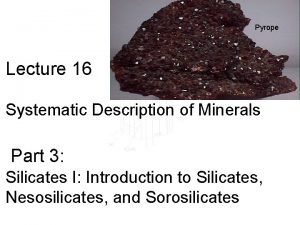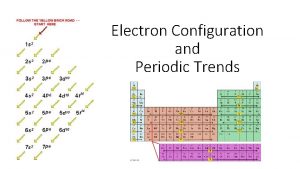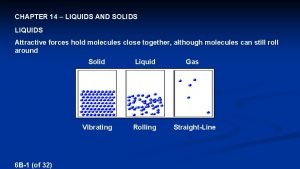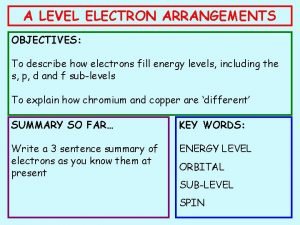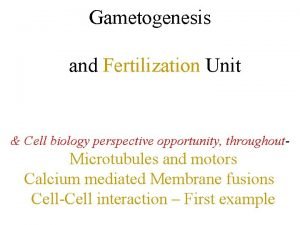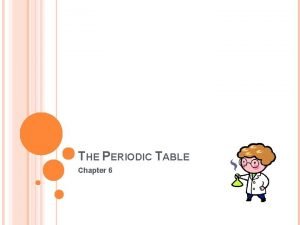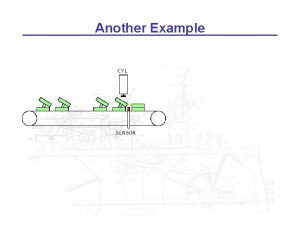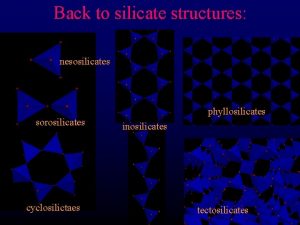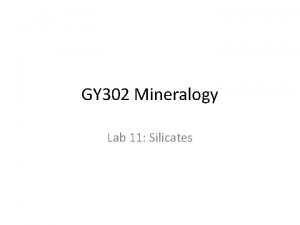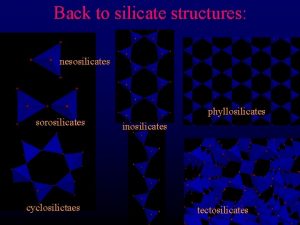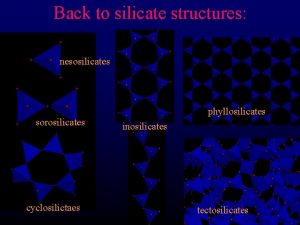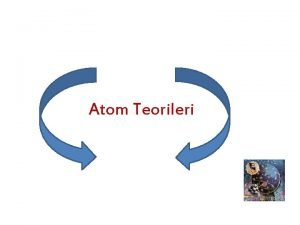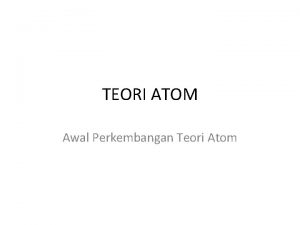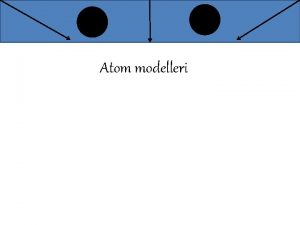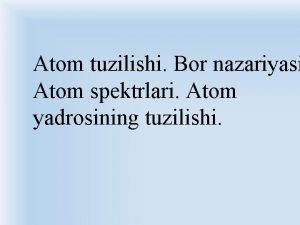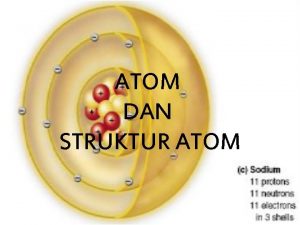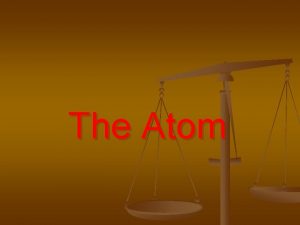Another picture of atom arrangement Nesosilicates Si O
























- Slides: 24

Another ‘picture’ of atom arrangement =

Nesosilicates – Si. O 44 Sorosilicates – Si 2 O 76 - Cyclosilicates – Si 6 O 1812 - Inosilicates (single) – Si 2 O 64 - Inosilicates (double) – Si 4 O 116 - Phyllosilicates – Si 2 O 52 - Tectosilicates – Si. O 20

Pauling’s Rules for ionic structures 1. Radius Ratio Principle – • • cation-anion distance can be calculated from their effective ionic radii cation coordination depends on relative radii between cations and surrounding anions • • • Geometrical calculations reveal ideal Rc/Ra ratios for selected coordination numbers Larger cation/anion ratio yields higher C. N. as C. N. increases, space between anions increases and larger cations can fit Stretching a polyhedra to fit a larger cation is possible

Pauling’s Rules for ionic structures 2. Electrostatic Valency Principle – Bond strength = ion valence / C. N. – Sum of bonds to an ion = charge on that ion – Relative bond strengths in a mineral containing >2 different ions: • • • Isodesmic – all bonds have same relative strength Anisodesmic – strength of one bond much stronger than others – simplify much stronger part to be an anionic entity (SO 42 -, NO 3 -, CO 32 -) Mesodesmic – cation-anion bond strength = ½ charge, meaning identical bond strength available for further bonding to cation or other anion

Bond strength – Pauling’s 2 nd Rule Bond Strength of Si = ½ the charge of O 2 - Si 4+ O 2 - has strength (charge) to attract either another Si or a different cation – if it attaches to another Si, the bonds between either Si will be identical Bond Strength = 4 (charge)/4(C. N. ) = 1 O 2 - Si 4+

Mesodesmic subunit – Si. O 44 • Each Si-O bond has strength of 1 • This is ½ the charge of O 2 • O 2 - then can make an equivalent bond to cations or to another Si 4+ (two Si 4+ then share an O) • Reason silicate can easily polymerize to form a number of different structural configurations (and why silicates are hard)

Pauling’s Rules for ionic structures 3. Sharing of edges or faces by coordinating polyhedra is inherently unstable – This puts cations closer together and they will repel each other

Pauling’s Rules for ionic structures 4. Cations of high charge do not share anions easily with other cations due to high degree of repulsion 5. Principle of Parsimony – Atomic structures tend to be composed of only a few distinct components – they are simple, with only a few types of ions and bonds.

Problem: • A melt or water solution that a mineral precipitates from contains ALL natural elements • Question: Do any of these ‘other’ ions get in?

Chemical ‘fingerprints’ of minerals • Major, minor, and trace constituents in a mineral • Stable isotopic signatures • Radioactive isotope signatures

Major, minor, and trace constituents in a mineral • A handsample-size rock or mineral has around 5*1024 atoms in it – theoretically almost every known element is somewhere in that rock, most in concentrations too small to measure… • Specific chemical composition of any mineral is a record of the melt or solution it precipitated from. Exact chemical composition of any mineral is a fingerprint, or a genetic record, much like your own DNA • This composition may be further affected by other processes • Can indicate provenance (origin), and from looking at changes in chemistry across adjacant/similar units - rate of precipitation/ crystallization, melt history, fluid history

Minor, trace elements • Because a lot of different ions get into any mineral’s structure as minor or trace impurities, strictly speaking, a formula could look like: • Ca 0. 004 Mg 1. 859 Fe 0. 158 Mn 0. 003 Al 0. 006 Zn 0. 002 Cu 0. 001 Pb 0. 00001 Si 0. 0985 Se 0. 002 O 4 • One of the ions is a determined integer, the other numbers are all reported relative to that one.

Stable Isotopes • A number of elements have more than one naturally occuring stable isotope. – Why atomic mass numbers are not whole they represent the relative fractions of naturally occurring stable isotopes • Any reaction involving one of these isotopes can have a fractionation – where one isotope is favored over another • Studying this fractionation yields information about the interaction of water and a mineral/rock, the origin of O in minerals, rates of weathering, climate history, and details of magma evolution, among other processes

Radioactive Isotopes • Many elements also have 1+ radioactive isotopes • A radioactive isotope is inherently unstable and through radiactive decay, turns into other isotopes (a string of these reactions is a decay chain) • The rates of each decay are variable – some are extremely slow • If a system is closed (no elements escape) then the proportion of parent (original) and daughter (product of a radioactive decay reaction) can yield a date. • Radioactive isotopes are also used to study petrogenesis, weathering rates, water/rock interaction, among other processes

Chemical Formulas • Subscripts represent relative numbers of elements present • (Parentheses) separate complexes or substituted elements – Fe(OH)3 – Fe bonded to 3 separate OH groups – (Mg, Fe)Si. O 4 – Olivine group – mineral composed of 0 -100 % of Mg, 100 -Mg% Fe

Stoichiometry • Some minerals contain varying amounts of 2+ elements which substitute for each other • Solid solution – elements substitute in the mineral structure on a sliding scale, defined in terms of the end members – species which contain 100% of one of the elements

Chemical heterogeneity • Matrix containing ions a mineral forms in contains many different ions/elements – sometimes they get into the mineral • Ease with which they do this: – Solid solution: ions which substitute easily form a series of minerals with varying compositions (olivine series how easily Mg (forsterite) and Fe (fayalite) swap…) – Impurity defect: ions of lower quantity or that have a harder time swapping get into the structure

Compositional diagrams Fe. O wustite Fe 3 O 4 magnetite Fe 2 O 3 hematite A Fe O A 1 B 1 C 1 A 1 B 2 C 3 x x B C

Si fayalite forsterite enstatite Fe Mg fayalite Fe ferrosilite forsterite Mg Pyroxene solid solution Mg. Si. O 3 – Fe. Si. O 3 Olivine solid solution Mg 2 Si. O 4 – Fe 2 Si. O 4

• KMg 3(Al. Si 3 O 10)(OH)2 - phlogopite • K(Li, Al)2 -3(Al. Si 3 O 10)(OH)2 – lepidolite • KAl 2(Al. Si 3 O 10)(OH)2 – muscovite • Amphiboles: • Ca 2 Mg 5 Si 8 O 22(OH)2 – tremolite • Ca 2(Mg, Fe)5 Si 8 O 22(OH)2 –actinolite Actinolite series minerals • (K, Na)0 -1(Ca, Na, Fe, Mg)2(Mg, Fe, Al)5(Si, Al)8 O 22(OH)2 - Hornblende

Normalization • Analyses of a mineral or rock can be reported in different ways: – Element weight %- Analysis yields x grams element in 100 grams sample – Oxide weight % because most analyses of minerals and rocks do not include oxygen, and because oxygen is usually the dominant anion - assume that charge imbalance from all known cations is balanced by some % of oxygen – Number of atoms – need to establish in order to get to a mineral’s chemical formula • Technique of relating all ions to one (often Oxygen) is called normalization

Normalization • Be able to convert between element weight %, oxide weight %, and # of atoms • What do you need to know in order convert these? – Element’s weight atomic mass (Si=28. 09 g/mol; O=15. 99 g/mol; Si. O 2=60. 08 g/mol) – Original analysis – Convention for relative oxides (Si. O 2, Al 2 O 3, Fe 2 O 3 etc) based on charge neutrality of complex with oxygen (using dominant redox species)

Normalization example • Start with data from quantitative analysis: weight percent of oxide in the mineral • Convert this to moles of oxide per 100 g of sample by dividing oxide weight percent by the oxide’s molecular weight • ‘Fudge factor’ from Perkins Box 1. 5, pg 22: is process called normalization – where we divide the number of moles of one thing by the total moles all species/oxides then are presented relative to one another

 Nesosilicates
Nesosilicates Harris burdick oscar and alphonse
Harris burdick oscar and alphonse General arrangement of subatomic particles in the atom
General arrangement of subatomic particles in the atom Electronic configuration
Electronic configuration The structure of the atom section 2 defining the atom
The structure of the atom section 2 defining the atom Democritus teori atom
Democritus teori atom Achievement vs aptitude tests ap psychology
Achievement vs aptitude tests ap psychology Picture 1 picture 2
Picture 1 picture 2 Accuaries
Accuaries Composition is the arrangement of
Composition is the arrangement of Fundamental properties of powder
Fundamental properties of powder Music composition rubric
Music composition rubric Consignment stock sap
Consignment stock sap Arrangement of the universe
Arrangement of the universe Slidetodoc.com
Slidetodoc.com Particle arrangement of solid
Particle arrangement of solid The geometric arrangement of objects in space
The geometric arrangement of objects in space What is seating arrangement in classroom
What is seating arrangement in classroom Electron level arrangement
Electron level arrangement Cilia 9+2 arrangement
Cilia 9+2 arrangement Topical pattern of arrangement
Topical pattern of arrangement Periodic table arrangement
Periodic table arrangement Bacteriology
Bacteriology Classification arrangement
Classification arrangement Tension in floral design
Tension in floral design
